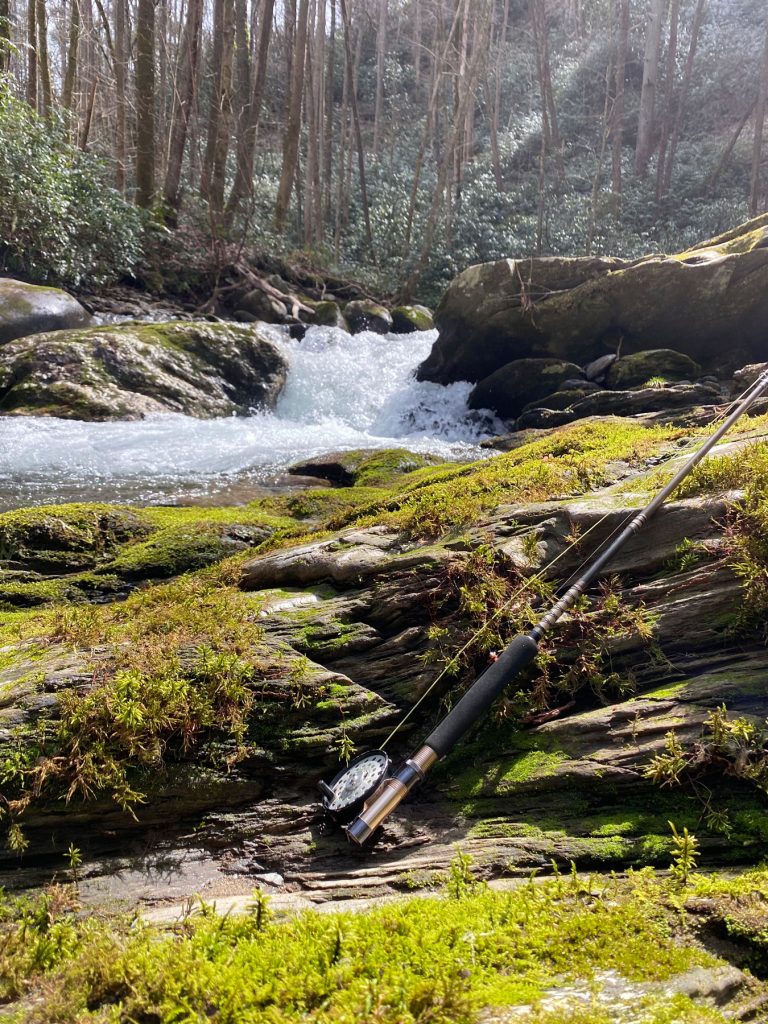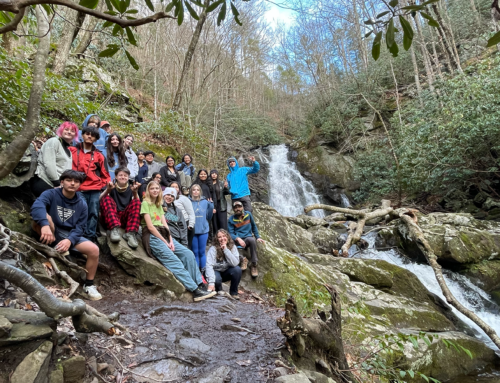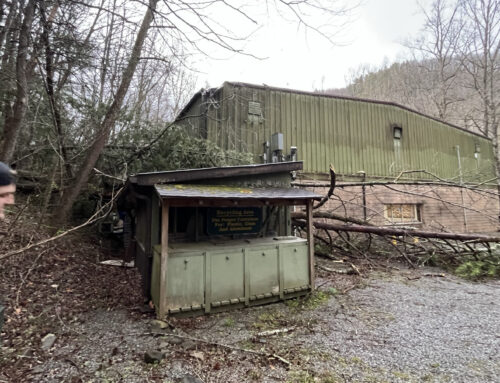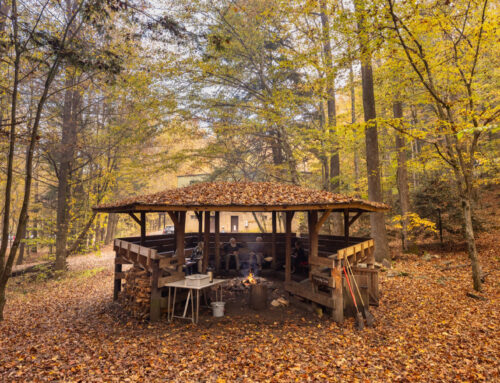Written by Robert Schmidt
“Is it the fly? Is it how I present it? Was I too loud? Was the water too high or the temperature too low? Is it too early, too late? Or are the fish just not hungry?” These are the things I say to myself as I sit by the water, trying to catch fish on my fly rod.
Some of my favorite memories are from fishing. Sometimes, more than I care to admit, you just won’t catch any fish. We call it “gettin skunked.” It happens to the best of us.
Which is another thing—what’s the point? Most of the fish I catch, I let go. There is nothing wrong with harvesting a couple within the local limits (here in the Great Smoky Mountains, the daily limit is five). But mark my words, it’s bad luck to keep your first fish. I just lean more to the catch-and-release ethic. It was how I was taught as a kid. In spite of not keeping the fish, catching one (or more) is my goal.
Many fly fishers I know always say, “It’s just good to be out, the fish are a bonus!” I am pretty sure that was first said by an angler who was wrapping up a day of quasi-successful fishing. However, in my opinion, if you can fish all day without catching anything and still have fun, you’re doing it right. I do it right at least half of the time. I’m still new to fly fishing.
What’s the big deal with fly fishing?
So what is the big deal with fly fishing? There are many ways to answer this question. I asked this question to an experienced fly fisher. He appeared stumped for a moment. Then he answered, “Well…you catch more fish.” The die hard fly fishers will tell you this is the big deal. And you might, if you have the right amount of skills. Or are in the right place at the right time, with the right fly and you use the right cast, at the right time of day, with the right weather, and on and on and on. Oh, and don’t forget luck!
 For me, fly fishing is just more fun. That’s it. Fly fishing can occasionally be plagued by elitism. I try not to add to it. The sport itself has no sense of elitism. Sometimes people, whether we intend to or not, can bring that to the sport.
For me, fly fishing is just more fun. That’s it. Fly fishing can occasionally be plagued by elitism. I try not to add to it. The sport itself has no sense of elitism. Sometimes people, whether we intend to or not, can bring that to the sport.
The way you cast a fly rod sets it apart from other types of fishing. It involves putting just the right amount of force at the right time for it to work—more technique and finesse than power. For me, it can be very meditative. I get so absorbed in the process because it requires my busy brain to focus on what I am doing.
Fly casting involves using the weight of your line to cast a fly. We call the lures flies because a large amount of them mimic flying insects. With conventional fishing, the weight of the lure pulls out the very light line. With fly fishing, the weight of the line gets the fly to where it needs to be. The flies used in this type of fishing are very, very small—I’m talking life-size here. That’s why you see fly fishers waiving their rod above their head with 30 feet of line out. It reminds me of the ribbon twirlers you see sometimes. This process is not for show; it is building up momentum in the line, as that is what you need to get the fly where you want it. It involves a lot of physics, which I don’t understand completely, but I can put a fly kind of close to where I want it (or in a tree behind me).
The naturalist aspect of fly fishing
I love the naturalist aspect of fishing. To be successful you need to analyze the many factors of the environment and determine how the fish are reacting to them. Then it is a matter of putting your fly where the fish are, making it look as natural as possible. During my time in Walker Valley, I delved deeper into being an angler naturalist. At Tremont, all of us are naturalists in our own way. I got the fish brain.
One of the central concepts we focus on at Tremont is that everything is connected. Fishing is no different. It’s all about noticing what is around you. Looking for insect observations, animal and plant sightings, anything, has helped me be successful when I fish. By that, I mean the many times I go home skunked, I still come back with observations, questions, and a greater understanding written in my nature journal. I just enjoy being out there.
Fishing the clear, small waters of Southern Appalachia is quite the challenge. For the fly fishers out there, try dull-colored mayfly nymphs on a Euro rig. Like many sports it seems like folks have a different language. What in the world is a “Euro rig” or “mayfly nymphs”? These are the things that will begin to make more sense as you continue fishing. If you want to start, I would recommend a nine foot, five weight. It can be shorter by a foot or two, and “weight” just means how big the rod is.
If you are in the Townsend, Tennessee, area check out Little River Outfitters. The staff is very helpful. Just tell them you are new to fly fishing and want a basic kit, and they can get you going in the right direction. Some of the equipment can be expensive, and some you just don’t need at all, like a fly box. Glue some foam into the bottom of an Altoid tin, and you have a place to put your flies.
So, what is the point? Fly fishing is a great way to get outside and can lead you to thinking about water and the surrounding environment in a different way. Be warned it can also lead to peering endlessly into water when you are not fishing and a wet mildew smell in your car. Fly fishing can be a rabbit hole you go down for the rest of your life. Keep at it, and it can reward you in unexpected ways—many that go far beyond catching a fish. It is a mix of hunting and trapping to trick an elusive, formidable adversary. You begin to tap into the predatory aspect of humans that predates the use of fire. All of these factors converge in the perfect moment and that’s when you connect with the fish.
That connection is the point.







